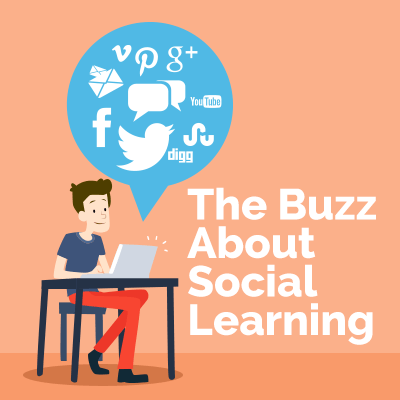Let’s take a look at the buzz about social learning: where it came from, why it’s popular and how you can facilitate social learning at your organization.
Why do we call it social learning?
The practice of social learning in the workplace is based on Albert Bandura’s social learning theory from 1977. In this theory, Bandura says that people learn behavior from their environment, through observation, imitation and modeling.
Social learning was around long before 1977 and also long before Learning & Development departments started launching social learning initiatives. Now, organizations all over the world are seeing real results
Why is social learning so popular?
Social learning is an informal learning and training strategy that gets huge results because it encourages employees’ natural tendencies to share knowledge, processes and work techniques with each other in a casual setting. And while formal training and assessment-filled courses serve their purpose, informal learning is a no-pressure learning situation with no quizzes or strict deadlines since the learning is ongoing.
Informal learning uses incentives like rewards and gamification strategies to motivate employees. An online network, like a learning management system, can be used to provide a place for employees to check in with one another, exchange knowledge and discuss what they’re learning in their everyday job duties.
How can you facilitate social learning that works?
There’s also software you can use to create that knowledge-sharing hub in your office. CourseMill® Wave is a on-demand, online LMS that’s perfect for social learning because you can get set up in minutes sharing content, seeing ratings and views and tracking activity. The key to facilitating social learning that works is building a social community where employees can share what they know with their coworkers.
In addition to encouraging knowledge sharing, you also want to provoke discussion opportunities. You can do this with discussion boards or social networks. For example, you could create a LinkedIn group for your organization where employees can start discussions, ask questions and offer tips from their own experience. It’s all about creating a community so that social learning can thrive and benefit your organization in return.
Want to read more about social learning? Here’s a great post: Social Learning for Online Training.
For more learning theory posts and e-Learning fun that’s as cool as an ice cream social, subscribe to the Everything e-Learning Blog.
